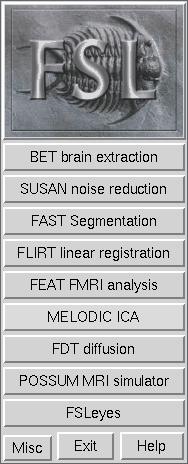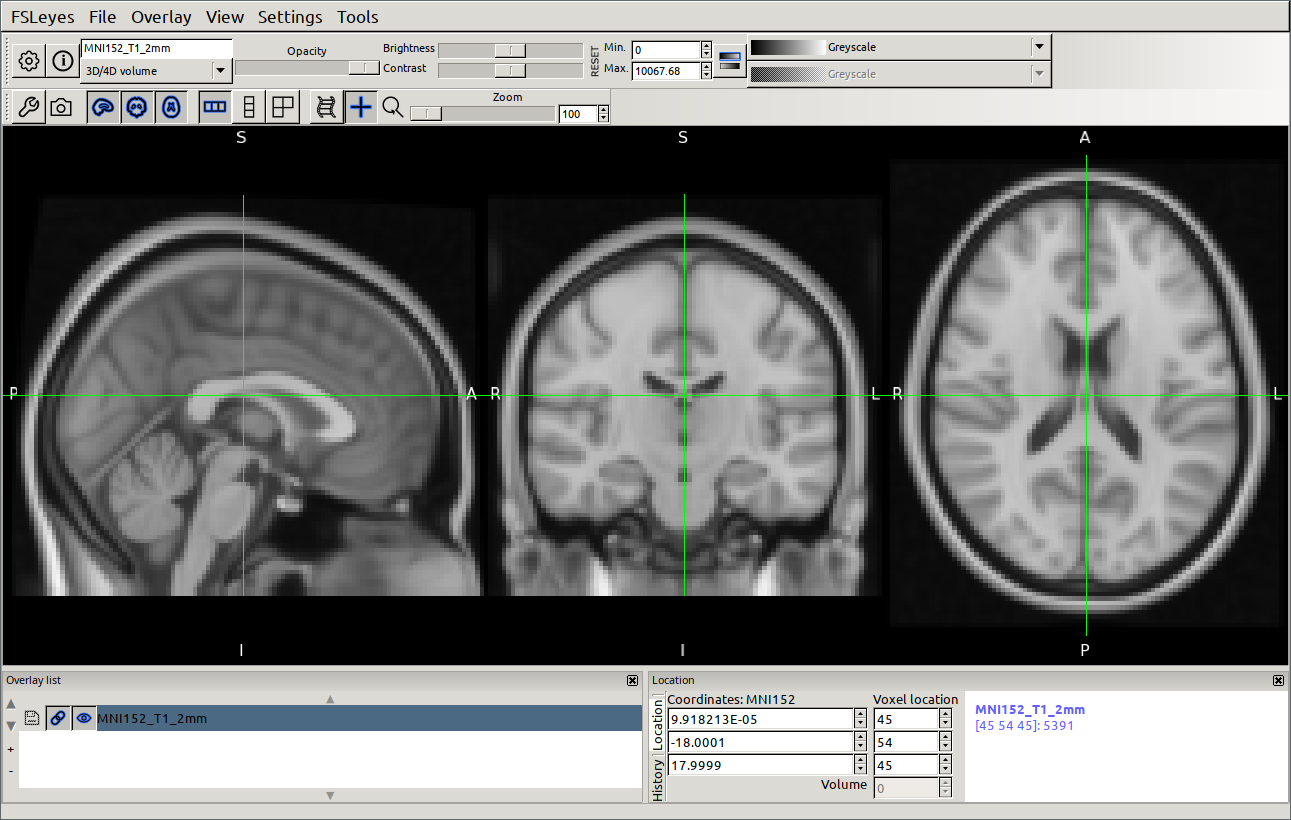Verify your installation
To check that FSL has been installed, close and re-open your shell/terminal, and then follow the steps below. If any of the steps don't work, check the troubleshooting page for some potential solutions.
-
Type
echo $FSLDIRinto the terminal, and press enter. This should print out the location that FSL has been installed to, e.g./Users/steve/fsl/. -
Type
fslmathsinto the terminal, and press enter. You should be presented with the help text for thefslmathscommand:$ fslmaths Usage: fslmaths [-dt <datatype>] <first_input> [operations and inputs] <output> [-odt <datatype>] Datatype information: -dt sets the datatype used internally for calculations (default float for all except double images) -odt sets the output datatype ( default is float ) Possible datatypes are: char short int float double input "input" will set the datatype to that of the original image ... -
Type
imcpinto the terminal, and press enter. You should be presented with the help text for theimcpcommand:$ imcp Usage: imcp <file1> <file2> imcp <file1> <directory> imcp <file1> <file2> ... <fileN> <directory> Copy images from <file1> to <file2>, or copy all <file>s to <directory> NB: filenames can be basenames or include an extension. Recognised file extensions: .nii.gz, .nii, .img, .hdr, .img.gz, .hdr.gz -
Type
fsl &into the terminal, and press enter. The FSL GUI should appear:

- Type
fsleyes -std &into the terminal, and press enter. The FSLeyes image viewer should start up, and display the MNI152 T1 standard template:

If all of the above steps work, you have successfully installed FSL. If any of the steps do not work, refer to the troubleshooting page for some suggestions.